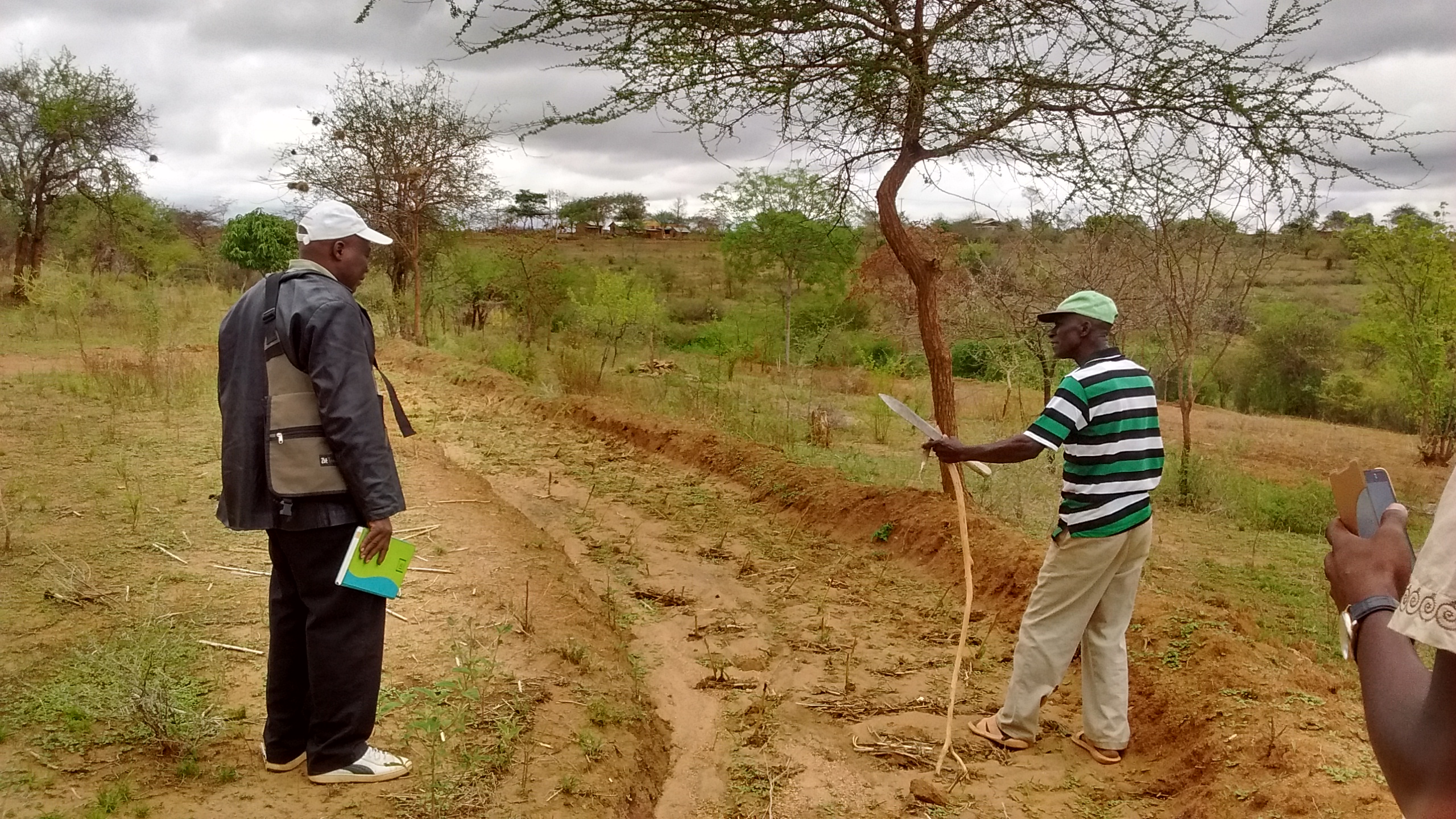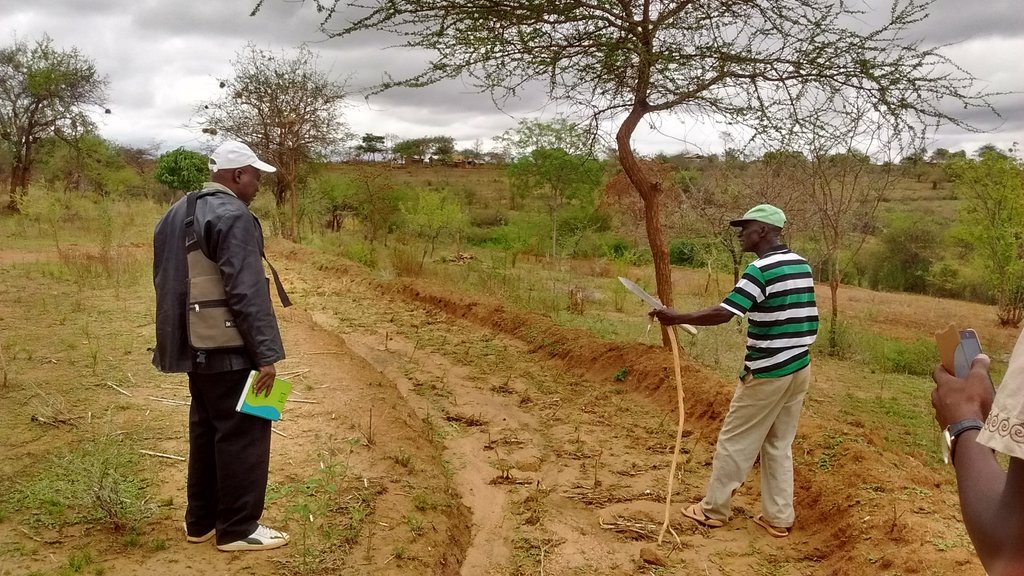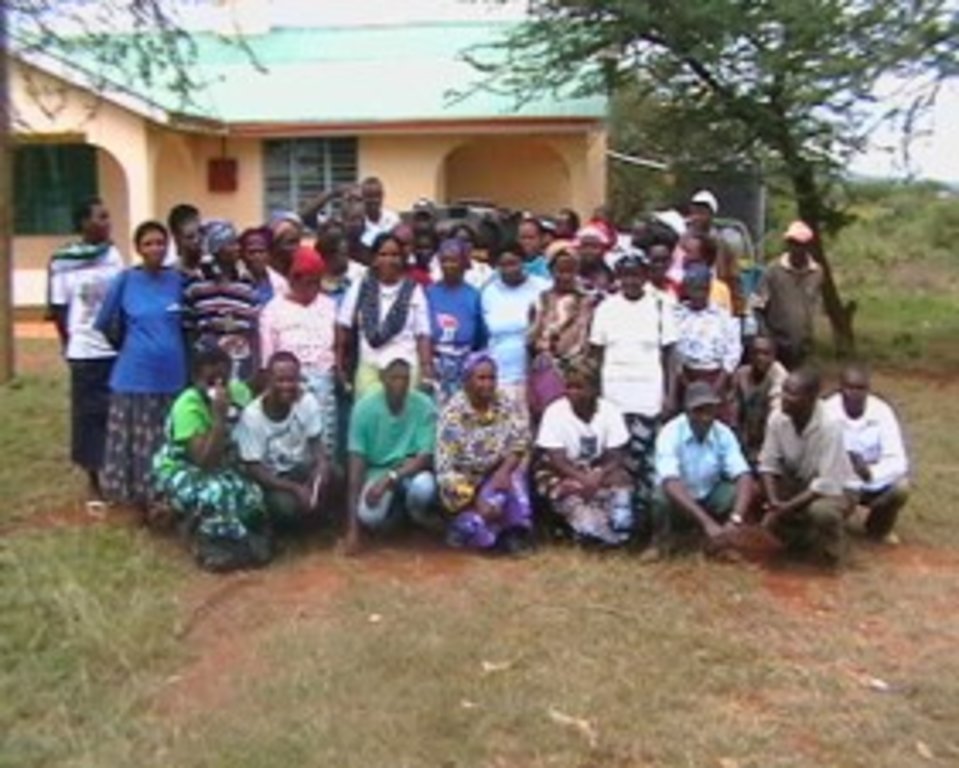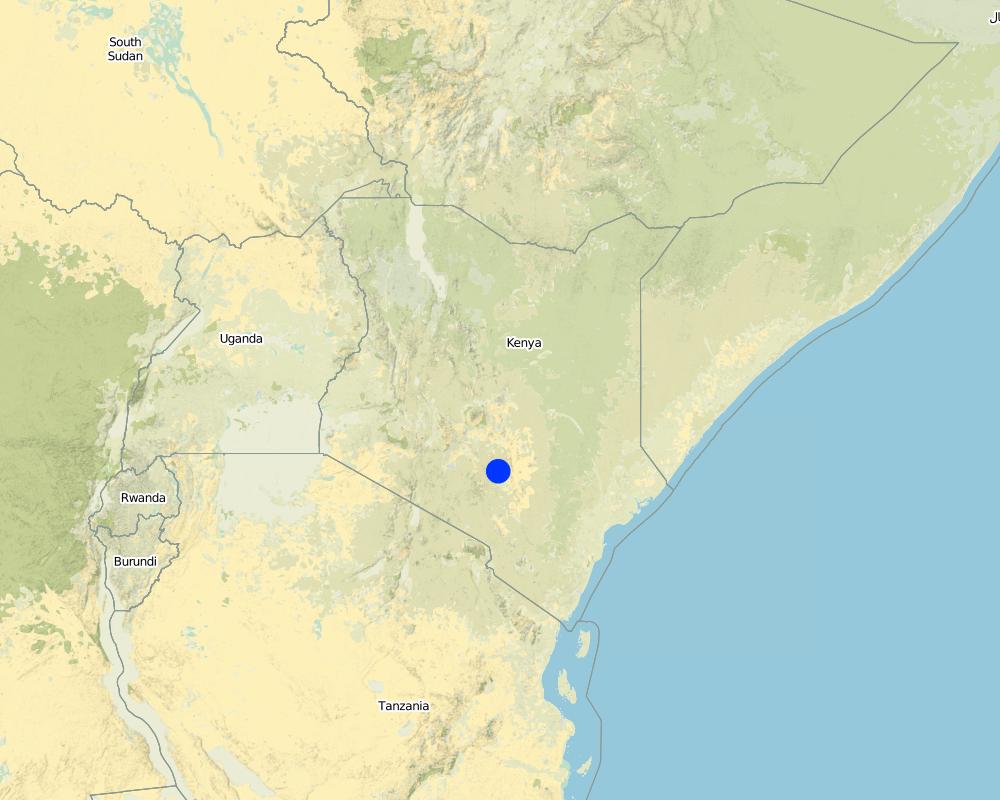In-situ pasture establishment demonstrations [Кения]
- Создание:
- Обновить:
- Составитель: Kevin Mganga
- Редактор: –
- Рецензент: Rima Mekdaschi Studer
On-farm demos
approaches_3285 - Кения
- Полная аннотация в формате PDF
- Полная аннотация в формате PDF для вывода на печать
- Полная аннотация в формате интернет-страницы
- Полная аннотация (неотформатированно)
- In-situ pasture establishment demonstrations: 26 января 2018 г. (inactive)
- On-farm pasture establishment demonstrations : 21 февраля 2018 г. (inactive)
- On-farm indigenous pasture establishment demonstrations : 20 апреля 2018 г. (inactive)
- On-farm indigenous pasture establishment demonstrations : 3 сентября 2018 г. (public)
Просмотреть разделы
Развернуть все Свернуть все1. Общая информация
1.2 Контактные данные специалистов и организаций, участвующих в описании и оценке Подхода
Ответственный (-ые) специалист (-ы)
Специалист по УЗП:
Название проекта, содействовавшего документированию/оценке Подхода (если применимо)
Book project: Guidelines to Rangeland Management in Sub-Saharan Africa (Rangeland Management)Название организации (-ий), содействовавших документированию/оценке Подхода (если применимо)
Department of Range and Wildlife Sciences, South Eastern Kenya University (SEKU) - Кения1.3 Условия, регламентирующие использование собранных ВОКАТ данных
Когда были собраны данные (на местах)?
10/11/2017
Составитель и ответственный/-ые специалист(-ы) согласны с условиями, регламентирующими использование собранных ВОКАТ данных:
Да
1.4 Ссылка (-и) на Анкету (-ы) по Технологиям УЗП
2. Описание Подхода УЗП
2.1 Краткое описание Подхода
In-situ pasture establishment demonstration programs and initiatives in the arid and semi-arid environments in Kenya. A more practical approach to enable the end-users appreciate the technology for easier adoption in their individual farms.
2.2 Подробное описание Подхода
Подробное описание Подхода:
The main characteristic and distinct feature is the interaction of different stakeholders (land users, NGOs, SLM specialists, local government officials and university researchers) in on-farm showcasing of sustainable land management technologies. Sustainable land management specialists, mostly researchers from the university with the help of local government and NGOs field officers demonstrate the entire process of grass reseeding technology from site selection, seedbed preparation, grass species selection, weeding, monitoring and evaluation (both plant and soil parameters). The main method used was on-farm demonstrations both at individual and pastoral and agropastoral groups sites (local land users sites) and a model demonstration site within the university premises (university site). The main stakeholders involved in the process are the SLM specialists, mainly researchers from the university (to share the knowledge, skills and technology), local government (county officials) (link the SLM specialists with the pastoral communities, share their experiences through on-farm demonstrations and explanations of similar technologies), local NGOs (to share the knowledge, past experiences and skills) and pastoral communities (the end users of the technologies, who also shared their indigenous technical knowledge related to natural resource management). The end-users, approximately 40 livestock keepers during the 5 visits and demonstrations, liked the approach because it was more practical (seeing is believing) i.e. on-farm, and can be easily replicated in individual lands under the same local conditions e.g. climate, soil type, grass species, methods of land preparation, land use system. After interacting with the SLM specialists from the universities during the visits and on-farm demonstrations, land-users have adopted the technology to ensure a continuous supply of pasture for their livestock.
2.3 Фотографии, иллюстрирующие Подход
Общие замечания к фотографиям:
Stakeholders discussing and sharing their knowledge and skills
2.5 Страна/ регион/ место, где применялся Подход
Страна:
Кения
Административная единица (Район/Область):
Eastern Province
Более точная привязка места:
Kitui municipality, Kitui county
Map
×2.6 Даты начала и окончания реализации Подхода
Если год начала реализации Подхода достоверно неизвестен, дайте примерную оценку:
менее 10 лет назад (недавняя)
2.7 Тип Подхода
- недавняя местная инициатива/ инновация
2.8 Каковы цели/ задачи Подхода
Demonstrate indigenous pasture establishment in-situ and encourage land users to practice reseeding as a means of 1) rehabilitating their degraded lands, 2) provide forage for their livestock and 3) income generation through sale of surplus animal products(e.g. milk), hay and seeds.
2.9 Условия содействующие применению Технологии/ Технологий в рамках Подхода или затрудняющие его
Социальные/ культурные/ религиозные нормы и ценности
- содействуют
Land users are livestock keepers so technologies and approaches to improve livestock production are welcome.
- затрудняют
Gender based constraints where the male dominate on-farm training/demonstrations compared to female land users
Наличие/ доступность финансовых ресурсов и услуг
- содействуют
Facilitation from previous (Agricultural Innovation for Dryland Africa, AIDA) and on-going research project (Rainwater harvesting for Indigenous Pasture Production, ROFIP, in semi-arid Kitui County, Kenya). The current ROFIP project is under the Food and Business Applied Research Fund (ARF) funded by the he Netherlands Organisation for Scientific Research (NWO)
- затрудняют
Accessing money/financial resources from government/public institutions and organisation is long (much slower) due to e.g. bureaucracy and protocol, compared to private organisation (much faster access, less bureaucratic)
Институциональные условия
- содействуют
University encourages extension service delivery to the local community and supports such initiatives to reach out to land users to share knowledge and expertise.
- затрудняют
Coordinating different stakeholders both in the private (NGOs) and public sector (university, local government), together with land users is often a challenge mainly due to the different nature of operations e.g. bureaucracy, protocol
Сотрудничество/ координация действий
- содействуют
Collaboration between university, local government and local land users
- затрудняют
Different stakeholders (e.g. land users, university, local government, NGOs) all have different key objectives to achieve within the general aim/objectives. This often hinders the coordination of actors and implementation of the approach.
Нормативно-правовая база (землевладение, права на земле- и водопользование)
- содействуют
Land used in the approach and for demonstrating the reseeding technology are privately owned.
- затрудняют
Land is owned as private, communal and group. This determines the organisation and arrangement of the approach.
Управление земельными ресурсами (принятие решений, осуществление и контроль за выполнением)
- содействуют
Осведомленность в области УЗП, доступность технической поддержки
- содействуют
SLM specialists have knowledge about the SLM technologies and various approaches.
Рынки (для приобретения материалов и услуг, продажи продукции) и цены
- содействуют
- затрудняют
Some of the inputs e.g. indigenous grass seeds, are not available in the formal seed market in Kenya. Reliance on the informal seed market often leads to the purchase and use of uncertified seeds with poor end results.
Объем работ, доступность рабочей силы
- содействуют
Use of local casual labourers. This contributes to owning the project activities and easier implementation in their individual farms.
- затрудняют
Division of man-hours between the project demonstration sites and individual activities. This may often lead to delays in implementing project activities.
3. Участие и распределение ролей заинтересованных сторон
3.1 Заинтересованные стороны, участвующие в реализации Подхода и их роли
- местные землепользователи/ местные сообщества
local land users and livestock keepers
Share their indigenous technical knowledge; provide land for on-farm demonstrations
- эксперты по УЗП/ сельскому хозяйству
university researchers
Describe the technologies using practical on-farm demonstrations. Additionally, share and present scientific research findings to demonstrate the contribution of the use of the technology for increased indigenous pasture production i.e. evidence based
- учителя/ преподаватели/ школьники / студенты
university students
Practical demonstrations
- общественные организации
Local NGO (Roads for Water)
Collaborate with university researchers to demonstrate to different land users and managers (e.g. researchers, pastoral and agropastoral communities) how other land management strategies e.g. rainwater harvesting using roads as a catchment can be incorporated in reseeding programs to enhance pasture establishment especially in dryland environments.
- местные власти
Extension agents and advisors in the county government
Link to the end-users, share past experiences and knowledge on SLM approaches
3.2 Участие местных землепользователей/ местных сообществ на разных стадиях реализации Подхода
| Участие местных землепользователей/ местных сообществ | Перечислите участников и опишите их вовлеченность | |
|---|---|---|
| инициирование/ мотивация | интерактивное | Local land users involved in the site selection and involved in the plans of the project. Local land users share their indigenous technical knowledge (ITK) gained through man years of experience on aspects such as; which species are preferred by free grazing animals (i.e. ranking different species); which grass species perform better under different rainfall regimes, topography and soil types; which grass species are best suited for soil conservation and soil erosion control. |
| планирование | интерактивное | Local land users actively involved in deciding on scheduled land users visits and demonstrations. Local land users participate and contribute to the planning of e.g. sowing dates, methods of land preparation, grass species selection in relation to their individual taste and preference and intended use (fodder for livestock, soil conservation and combating degradation, large scale seed production). |
| выполнение | интерактивное | Demonstration conducted on individual 'farms'/ pastures and local land users implement the technologies as 'model land users'. |
| мониторинг/ оценка | интерактивное | Constant communication from through short message services (SMS) and telephone calls on progress and challenges as land users monitor changes e.g. seed germination, seedling establishment. Local land users report this to the SLM specialists e.g. researchers in the university and post-graduate students involved in the projects. |
| Research | пассивное | Research is mainly conducted by SLM specialists at university and students. Local government are also involved in doing research since some of the students recruited to be part of the project e.g PhD and MSc students are permanently employed by the local government. Local land users share their indigenous technical knowledge (ITK) through one-on-one informal discussions/sessions between them and the SLM specialists and students. |
3.3 Схема реализации (если имеется)
Описание:
Interaction between different stakeholders (SLM specialists, local government, local NGOs and land users) for in-situ pasture establishment demonstrations in arid and semi-arid environments in Kenya
Автор:
Kevin Z. Mganga
3.4 Принятие решений по выбору Технологии/ Технологий УЗП
Укажите, кто принимал решение по выбору применяемой Технологии/ Технологий:
- все участники как часть процесса совместных действий
Поясните на чём было основано принятие решений:
- анализ подробно описанного опыта и знаний по УЗП (принятие решений на основе подтвержденных фактов)
- результаты исследований
- личный опыт и мнения (незадокументированные)
4. Техническая поддержка, повышение компетенций и управление знаниями
4.1 Повышение компетенций/ обучение
Проводилось ли обучение землепользователей/ других заинтересованных лиц?
Да
Укажите, кто проходил обучение:
- землепользователи
- местный персонал/консультанты
Если существенно, укажите гендерный и возрастной состав, статус, этническую принадлежность и т.д.
The land users and field staff/advisers were drawn from both genders (male and female). University undergraduate students (both male and female students, between the ages of 20-24 years) were also involved in the training during on-farm practical sessions.
Тип обучения:
- опытные участки
Рассматриваемые темы:
site selection, seedbed preparation, choice of grass species, monitoring and evaluation (plant and soil attributes), maintenance and further management
4.2 Консультационные услуги
Есть ли у землепользователей возможность получать консультации?
Да
Укажите, где именно оказываются консультационные услуги:
- на полях землепользователей
Описание/ комментарий:
Advisory services on-farm during visits
4.3 Институциональная (организационная) поддержка
В ходе реализации Подхода были ли организованы новые институциональные структуры или поддержаны уже существующие?
- да, умеренно
Укажите уровень, на котором структуры были укреплены или вновь созданы:
- местные
- региональный
- национальный
Опишите организацию, функции и ответственность, членство и т.д.
University (South Eastern Kenya University, SEKU) - extension and outreach and research and academic exchange programs with other research institutions e.g. Kenya Agricultural and Livestock Research Organization (KALRO), International Crops Research Institute for the Semi-Arid Tropics (ICRISAT), Kenya Seed Company, and other universities e.g. University of Nairobi (UoN)
Укажите тип поддержки:
- финансовая
- повышение компетенций/ обучение
Подробнее:
Financial support from within university research funds and the National Research Fund (NRF), Kenya, through the Ministry of Education, Science and Technology. Capacity building through postgraduate training involving researchers from SEKU, KALRO, ICRISAT and UoN
4.4 Мониторинг и оценка
Являются ли мониторинг и оценка частью Подхода?
Да
Комментарии:
Adoption and uptake of the technologies among land users
Если да, будет ли данный документ использоваться для мониторинга и оценки?
Да
Комментарии:
The approach demonstrates sustainable land management technologies e.g. grass reseeding, on farm. This is aimed at increasing adoption and spread of the technology by other land users.
4.5 Научные исследования
Были ли научные исследования частью Подхода?
Да
Укажите темы исследований:
- экология
- технология
Напишите подробнее и назовите тех, кто выполнял исследования:
Part of a SLM specialist i.e. researcher at the university, research project
5. Финансирование и внешняя материальная поддержка
5.1 Годовой бюджет мероприятий по УЗП в рамках Подхода
Если точный годовой бюжет неизвестен, укажите примерный диапазон затрат:
- 2000-10000
Комментарий (например, основные источники финансирования/ ключевые доноры):
Food and Business Applied Research Fund (ARF) funded by the The Netherlands Organisation for Scientific Research (NWO), Netherlands
5.2 Финансирование и внешняя материальная поддержка, предоставляемая землепользователям
Предоставлялась ли землепользователям финансовая/ материальная поддержка для применения Технологии /Технологий?
Да
Если да, укажите тип(-ы) поддержки, кто ее предоставил и условия предоставления:
Land and seed bed preparation: hiring of casual labour and rent of machinery/equipment (ox-plough/tractor)
5.3 Субсидии на отдельные затраты (включая оплату труда)
- труд
| В какой степени | Опишите субсидии подробнее |
|---|---|
| профинансированы частично | In cash subsidy mainly for land/site preparation e.g. creating of micro-catchments using ox-driven ploughs, digging trenches as structures for rainwater harvesting. |
- оборудование
| Укажите, какие ресурсы были субсидированы | В какой степени | Опишите субсидии подробнее |
|---|---|---|
| техника | профинансированы полностью | Ox-driven ploughs for site preparation. Occasionally tractors |
| инвентарь/ инструменты | профинансированы полностью | Hand held hoes for bush clearing and site preparation |
- сельскохозяйственные
| Укажите, какие ресурсы были субсидированы | В какой степени | Опишите субсидии подробнее |
|---|---|---|
| семена | профинансированы полностью | Indigenous grass seeds used in the technology and approach are provided for by the project. However, seed for subsequent sowing is expected to be harvested from the established pasture sites |
Если труд землепользователя был существенным вкладом, укажите, был ли этот вклад:
- добровольный
Комментарии:
This is mainly for maintaining, monitoring and evaluation of the on-farm sites e.g. aspects of maintaining the fence to keep of free-ranging livestock from damaging the established pastures and assisting other hired labourers e.g. in seeding.
5.4 Кредитование
Предоставлялись ли в рамках Подхода кредиты на мероприятия УЗП?
Нет
5.5 Другие методы или инструменты стимулирования
Использовались ли другие методы или инструменты стимулирования для продвижения Технологий УЗП?
Нет
6. Анализ влияния и заключительные положения
6.1 Влияние Подхода
Сумел ли Подход расширить возможности местных землепользователей, повысить участие заинтересованных сторон?
- Нет
- Да, немного
- Да, умеренно
- Да, существенно
They owned and embraced the initiative since it involved them from the onset
Сумел ли Подход дать возможность принимать решения на основе подтвержденных фактов?
- Нет
- Да, немного
- Да, умеренно
- Да, существенно
On-farm sites are used for both demonstrations and experimental plots for research. This is mainly conducted by SLM specialists from the university and postgraduate students in close collaboration with land users (e.g. farmers) aimed at comparing different treatments for the technologies.
Сумел ли Подход помочь землепользователям внедрить и поддерживать технологии УЗП?
- Нет
- Да, немного
- Да, умеренно
- Да, существенно
Practical on-farm demonstrations in their individual farms
Сумел ли Подход улучшить согласованность действий и повысить рентабельность применения практик УЗП:
- Нет
- Да, немного
- Да, умеренно
- Да, существенно
Communication through SMS and phone calls, exchange of photos/videos of demonstrations through WhatsApp groups and emails
Сумел ли Подход мобилизовать/ расширить доступ к финансовым ресурсам для применения практик УЗП?
- Нет
- Да, немного
- Да, умеренно
- Да, существенно
Joint research grants and funds through collaborative work among stakeholders mostly between local NGOs and universities
Сумел ли Подход расширить знания и возможности землепользователей в применении практик УЗП?
- Нет
- Да, немного
- Да, умеренно
- Да, существенно
Through practical and hands-on on-farm demonstrations by SLM specialists
Сумел ли Подход расширить знания и возможности других заинтересованных сторон?
- Нет
- Да, немного
- Да, умеренно
- Да, существенно
Local government and NGOs appreciating the technologies and serve as ambassadors of the same
Сумел ли Подход укрепить сотрудничество между заинтересоваными сторонами/ выстроить механизмы сотрудничества?
- Нет
- Да, немного
- Да, умеренно
- Да, существенно
Collaboration between universities, local government, local NGOs and land users strenghtened
Сумел ли Подход снизить остроту конфликтов?
- Нет
- Да, немного
- Да, умеренно
- Да, существенно
Сумел ли Подход расширить возможности социально и экономически уязвимых групп?
- Нет
- Да, немного
- Да, умеренно
- Да, существенно
Сумел ли Подход содействать гендерному равенству и расширить права и возможности женщин и девочек?
- Нет
- Да, немного
- Да, умеренно
- Да, существенно
Female land users involved
Сумел ли Подход стимулировать молодежь/ будущее поколение землепользователей заниматься УЗП?
- Нет
- Да, немного
- Да, умеренно
- Да, существенно
Young farmers involved. Also students in universities as part of practicals.
Сумел ли Подход способствовать улучшению продовольственой безопасности/ качества питания?
- Нет
- Да, немного
- Да, умеренно
- Да, существенно
Improved pasture production for livestock, healthy animals
Сумел ли Подход расширить доступ к рынкам?
- Нет
- Да, немного
- Да, умеренно
- Да, существенно
Market for sale of grass seeds
Сумел ли Подход улучшить способность землепользователей адаптироваться к изменениям климата и смягчать последствия катастрофических погодных явлений?
- Нет
- Да, немного
- Да, умеренно
- Да, существенно
Combining the use of indigenous drought tolerant grass species and water harvesting
Сумел ли Подход привести к созданию новых рабочих мест/ к расширению возможностей получения дохода?
- Нет
- Да, немного
- Да, умеренно
- Да, существенно
Through sale of grass seeds and hay, surplus animal products (mostly milk) in seasons of plenty.
6.2 Основные причины, побуждающие землепользователей внедрять УЗП
- рост продуктивности
Increased pasture yields (improved livestock production)
- рост прибыли (доходности) и рентабельности
Sale of grass seeds and hay and surplus animal products e.g. milk and healthy animals at a good market price
- снижение деградации земель
Established pastureland reduces soil erosion and contributes to enhanced soil moisture and C-sequestration (soil ecosystem services).
- экологическая сознательность
Environmental conservation
6.3 Долгосрочная устойчивость мероприятий в рамках Подхода
Могут ли землепользователи самостоятельно (без внешней поддержки) продолжать применение того, что было реализовано в рамках Подхода?
- да
Если да, опишите как:
Approach is practical and involves the use of already existing knowledge and skills e.g. use of ox-plough for site preparation (creating micro-catchments) is not foreign; local land users have interacted with the indigenous grasses
6.4 Сильные стороны/ преимущества Подхода
| Сильные стороны/ преимущества/ возможности по мнению землепользователей |
|---|
| Ease to understand and appreciate because of its practical nature |
| Approach allows a close interaction and exchange between the different stakeholders (land users, NGOs, local government officials, SLM specialists, universities) i.e. provides a link between science-practice link, learning by doing. |
| Сильные стороны/ преимущества/ возможности по мнению составителя или других ключевых специалистов |
|---|
| On-farm and practical approach for easy adoption by other land users |
| Takes advantage of group dynamics where different stakeholders share and provide immediate feedback and seek clarification throughout the process thus enriching the discussions |
6.5 Слабые стороны/ недостатки Подхода и пути их преодоления
| Слабые стороны/ недостатки/ риски по мнению землепользователей | Возможные пути их преодоления/снижения? |
|---|---|
| Source of conflict between land user where the on-farm demonstration has been conducted and other neighboring land users e.g. diverting run-off in the upland thus reducing the volume of rainwater reaching farms located down-slope. | Continuous capacity building, knowledge sharing and sensitization |
| Choice of on-farm demonstration site at an individual land owner can lead to aggravation among other land users | Use of communal or group owned land for on-farm demonstrations |
| Allocation of time to attend the on-farm demonstrations. The approach is often conducted before the onset of the rains, when the land-users are busy preparing their own farms for sowing. This might lead to low turn-outs during demonstrations. | In consultation with the land users, set the date(s) when majority of the land users are available. |
| Слабые стороны/ недостатки/ риски по мнению составителя или ответственных специалистов | Возможные пути их преодоления/снижения? |
|---|---|
| Language barrier (SLM specialists and land users) | Involving a local land user/personnel to bridge the gap |
7. Справочные материалы и ссылки
7.1 Методы сбора/источники информации
- выезды на места, полевые обследования
20
- опросы землепользователей
50
7.2 Ссылки на опубликованные материалы
Название, автор, год публикации, ISBN:
KZ Mganga, NKR Musimba, DM Nyariki. 2015. Competition indices of three perennial grasses used to rehabilitate degraded semi-arid rangelands in Kenya. The Rangelands Journal 37: 489-495
Где опубликовано? Стоимость?
The Rangeland Journal, USD 25
Название, автор, год публикации, ISBN:
KZ Mganga, NKR Musimba, DM Nyariki. 2015. Combining sustainable land management technologies to combat land degradation and improve rural livelihoods in semi-arid lands in Kenya. Environmental Management 56: 1538-1548
Где опубликовано? Стоимость?
Environmental Management, USD 38
Название, автор, год публикации, ISBN:
KZ Mganga, NKR Musimba, MM Nyangito, DM Nyariki, AW Mwang’ombe. 2015. The choice of grass species to combat desertification in semi-arid Kenyan rangelands is greatly influenced by their forage value for livestock. Grass and Forage Science 70: 161-167.
Где опубликовано? Стоимость?
Grass and Forage Science, USD 38
7.3 Ссылки на материалы, доступные онлайн
Название/ описание:
Competition indices of three perennial grasses used to rehabilitate degraded semi-arid rangelands in Kenya
Адрес в сети Интернет:
http://www.publish.csiro.au/rj/RJ15023
Название/ описание:
Combining sustainable land management technologies to combat land degradation and improve rural livelihoods in semi-arid lands in Kenya
Адрес в сети Интернет:
https://link.springer.com/article/10.1007/s00267-015-0579-9
Название/ описание:
The choice of grass species to combat desertication in semi-arid Kenyan rangelands is greatly inuenced by their forage value for livestock
Адрес в сети Интернет:
http://onlinelibrary.wiley.com/doi/10.1111/gfs.12089/abstract
Ссылки и модули
Развернуть все Свернуть всеСсылки
Нет ссылок
Модули
Нет модулей






